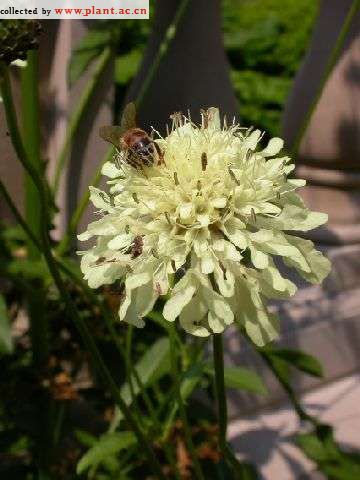Cephalaria giganteaGiant scabious
科:川续断科
Family:Dipsacaceae
common name:Giant scabious
introduce:Plant Type: Herbaceous perennial
Family: Dipsacaceae
Missouri Native: No
Native Range: Caucusus
Height: 4 to 6 feet
Spread: 2 to 4 feet
Bloom Time: June - August
Bloom Color: Primrose yellow
Sun: Full sun (only)
Water: Medium moisture
Maintenance: Low
General Culture:
Best grown in moist, fertile, well-drained soils in full sun. Flowering stems tend to flop if plants are grown in anything less than full sun. Foliage generally declines as the summer progresses, particularly if soils are allowed to dry out. Deadhead spent flowers to promote additional bloom. At the end of the flowering period, cut back all flowering stems to the ground and trim back foliage as needed.
Noteworthy Characteristics:
Giant scabious or yellow scabious is native to moist soils from the Caucusus to Siberia. Closely related to and in the same family as scabiosas (pin cushion flowers), this vigorous plant is primarily grown for its large size, attractive young foliage and yellow flowers. It is an erect, clump-forming perennial that typically grows 4- 6?(infrequently to 8? tall. Scabiosa-like primrose yellow flowers (to 2.5?diameter) bloom in summer. Flowers appear singly atop stiff, wiry, branched, sparsely-leaved stems rising well above the foliage mound to 6?tall. Pinnately-divided, dark green, basal leaves (to 16?long) with oblong to lance-shaped segments. Synonymous with C. tartarica. Also commonly called Tartarian cephalaria.
No serious insect or disease problems. Taller plants may need some staking or support.
Uses:
This plant needs a large space. Border rears or cottage gardens. Naturalize in wildflower meadows or wild areas.
